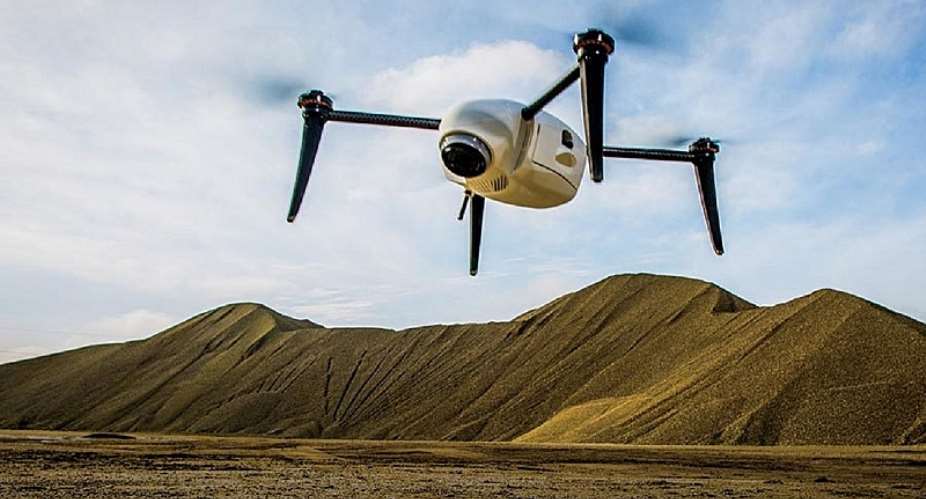In recent years, robots and drones have emerged as powerful tools in the field of physical security. Africa, with its diverse landscape and unique security challenges, has witnessed significant advancements in the use of these technologies. This article explores the past, present, and future of robots and drones for physical security within Africa, highlighting their impact and potential in addressing security concerns across the continent.
1. The Past: Early Innovations in Security Robotics
The use of robots in physical security within Africa can be traced back to the early 2000s when the first autonomous surveillance robots were introduced. These early innovations aimed to enhance surveillance capabilities and improve response times in critical security situations. However, the adoption of robotic technologies in Africa was initially limited due to various factors, including cost, infrastructure limitations, and regulatory challenges.
2. The Present: Advancements and Applications
Over the past decade, significant advancements have been made in the field of security robotics, making these technologies more accessible and effective in African contexts. Today, robots and drones are being deployed for a wide range of security applications, including:
a. Surveillance and Monitoring: Robots and drones equipped with high-resolution cameras and sensors enable real-time monitoring of sensitive areas, such as borders, wildlife reserves, and urban centers. These technologies provide enhanced situational awareness and help detect and deter potential security threats.
b. Access Control and Intrusion Detection: Robots with facial recognition capabilities and advanced access control systems are being used to manage entry points and identify unauthorized individuals. These technologies offer a more efficient and secure approach to physical access control.
c. Emergency Response and Disaster Management: Robots and drones equipped with specialized sensors and tools are utilized during emergency situations and natural disasters. These technologies assist in search and rescue operations, hazardous material handling, and structural assessment.
d. Patrolling and Guarding: Autonomous robots are increasingly employed for patrolling and guarding purposes, complementing human security personnel. These robots can navigate complex terrains and perform routine surveillance tasks, enhancing the overall security posture.
3. The Future: Potential and Challenges
The future of robots and drones for physical security within Africa holds immense potential. As technology continues to evolve, we can expect the following developments:
a. Artificial Intelligence and Machine Learning: Integration of AI and machine learning algorithms will enable robots and drones to learn and adapt to their environments, making them more efficient in identifying and responding to potential security threats.
b. Collaborative Systems: Future advancements may involve the integration of robots and drones into a collaborative security ecosystem. These technologies will work in synergy with each other, sharing information and coordinating responses to enhance overall security effectiveness.
c. Regulatory Frameworks: The development and implementation of robust regulatory frameworks will be crucial to ensure responsible and ethical use of robots and drones for physical security. Addressing concerns related to privacy, data protection, and accountability will play a pivotal role in shaping the future adoption of these technologies.
d. Local Innovation and Adaptation: Africa has a vibrant ecosystem of innovators and entrepreneurs. Local solutions that cater to the unique security challenges of the continent will continue to emerge, fostering the growth and adoption of robotics and drone technologies.
Conclusion:
The past, present, and future of robots and drones for physical security within Africa showcase the transformative potential of these technologies in addressing security concerns. From early innovations to current applications and future developments, robots and drones have become integral components of Africa's security landscape. With ongoing advancements and a conducive environment for innovation, Africa is poised to leverage these technologies to create safer and more secure environments for its people.





 Offinso-Kwaagyekrom: Two motorbikes involve in head-on collision; two killed, t...
Offinso-Kwaagyekrom: Two motorbikes involve in head-on collision; two killed, t...
 A/R: School Feeding Caterers threaten to stop cooking despite receiving payment
A/R: School Feeding Caterers threaten to stop cooking despite receiving payment
 Free SHS Policy: Reviewing to allow parents to pay fees won't solve problems - P...
Free SHS Policy: Reviewing to allow parents to pay fees won't solve problems - P...
 High flight tickets: Airlines pay $2,000 for overflying Ghana, other African cou...
High flight tickets: Airlines pay $2,000 for overflying Ghana, other African cou...
 Majority in NPP still prefer me to be Ghana’s president — Alan
Majority in NPP still prefer me to be Ghana’s president — Alan
 Ghanaians know and love me than Bawumia and Mahama — Alan
Ghanaians know and love me than Bawumia and Mahama — Alan
![NDC Central Regional Chairman, Richard Kofi Asiedu [File Photo]](https://cdn.modernghana.com/content__/84/56/73202413705-8dt2xkjwvq-whatsapp-image-2023-03-02-at-15926-pm.jpeg) NDC suspends Central Regional Chairman Richard Kofi Asiedu for anti-party conduc...
NDC suspends Central Regional Chairman Richard Kofi Asiedu for anti-party conduc...
![Alan Kyerematen [File Photo]](https://cdn.modernghana.com/content__/84/56/73202412004-m6itl8w331-alan1.jpg) There is no village in Ghana where they don’t know me; the people love me – Alan
There is no village in Ghana where they don’t know me; the people love me – Alan
 Maame Tiwaa called my wife; threatened her and my children – Adam Bonaa alleges
Maame Tiwaa called my wife; threatened her and my children – Adam Bonaa alleges
 Ghanaian chef's 'longest cooking marathon' claim hoax
Ghanaian chef's 'longest cooking marathon' claim hoax
